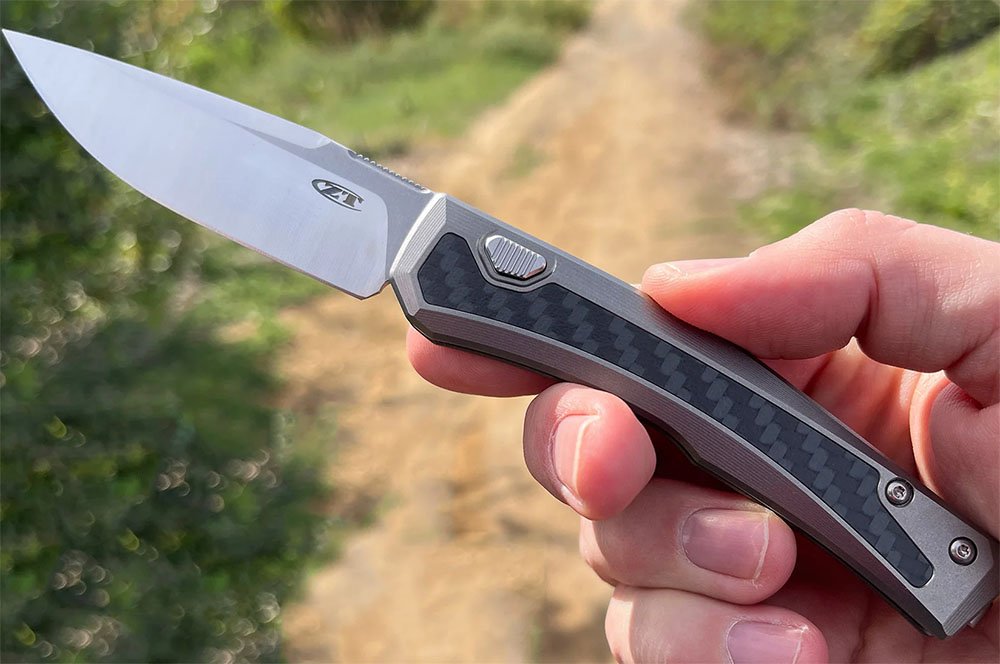What is Knife Craftsmanship?
Knife craftsmanship represents an enduring union between human passion and technical skill. For many, a well-crafted knife becomes more than just a tool; it transforms into a symbol of everyday reliability and creativity. The hands behind these premium blades are committed to an intricate process—from selecting the right metals to applying precise edge grinds, every step demands acute attention to detail. When examining what sets top-tier products apart, such as the meticulously engineered ZT Knives, you’ll notice the difference is not superficial: it’s built into the bones of every blade.
Craftsmanship in this context is defined by time-tested practices meeting thoughtful modern innovation. Makers refine their methods over the years, iterating on each design and process. True craftsmanship shines through the knife’s balance in the hand, the smooth opening action, and the consistent grind along the blade’s edge. Collectors and professionals alike can attest that a premium knife feels distinct. Confidence builds as you realize this instrument will excel whether slicing food in the kitchen or carving through rope and wood outdoors. Ultimately, a great knife bridges the gap between function and form, standing out for the quality that is evident every time it is used.
Materials That Make the Difference
The leap from a good knife to a great one often comes down to the choice of material. The steel at the heart of a premium blade forms the foundation for exceptional performance, effortless sharpening, and long-term resilience against wear. Modern super-steels, such as CPM-20CV, S35VN, and M390, are prized for their remarkable balance of hardness, toughness, edge retention, and corrosion resistance—qualities essential for a diverse range of users, including chefs and outdoor adventurers. Handle materials, too, play a pivotal role, with compounds like titanium, carbon fiber, and micarta offering superior grip, reduced weight, and sleek aesthetics.
Selecting the right steel or handle composite does more than impress on spec sheets—it radically influences longevity, comfort, and daily satisfaction. For anyone serious about their blades, steel science becomes a helpful guide. According to the best knife steel guide, properties like Rockwell hardness, wear resistance, and ease of sharpening should guide every purchasing decision. Thoughtful material selection ensures that each component of the knife operates in harmony, delivering a user experience that keeps you coming back to the same tool, trip after trip or meal after meal.
How Manufacturing Techniques Impact Quality
The journey from raw steel to refined blade is an adventure in technical mastery. Modern manufacturing combines time-honored traditions, such as forging—where heat and hammer strokes shape strong, cohesive blades—with innovations in CNC machining, offering extraordinary precision and consistency. These techniques are not mutually exclusive: many manufacturers weave artisan skill into modern processes to achieve the best of both worlds. A forged knife, for example, may gain unparalleled strength and resilience. Meanwhile, finely tuned CNC machining produces parts that fit together seamlessly, enhancing a knife’s reliability and smoothness.
Each production phase is critical: heat treatment brings out the desired molecular structure for hardness and durability, while careful grinding and honing create razor-sharp edges that are also tough enough to resist chipping. Attention to finishing—whether it’s a hand-polished blade face or a carefully contoured handle—can mean the difference between a blade that looks attractive and one that truly performs under pressure. The result is a premium knife that feels like an extension of the hand, engineered for repeatable excellence across years of regular use.
The Role of Ergonomics and Design
The magic of a knife lies as much in its feel as in its function. No matter the quality of the steel, a blade that’s uncomfortable or awkward will rarely leave its sheath. Great design seamlessly blends thoughtful ergonomics—considerations such as finger grooves, handle thickness, and weight distribution—with user-friendly details that make prolonged use both safe and enjoyable. Expert makers solicit feedback from real-world users, testing prototypes in various scenarios to refine every curve and surface.
Features like thumb ramps, deep-carry clips, and flipper tabs aren’t just decorative—they solve problems, making deployment smoother and boosting security during use. The rise of frame and liner locks, for example, reflects a demand for easy one-handed operation without sacrificing safety. As trends shift, so do design innovations: today’s premium knives offer modular grips, customizable scales, and subtle enhancements that make them stand out in both the hand and the pocket. Ultimately, a knife’s design should inspire confidence, whether it’s assisting with delicate kitchen prep or heavy-duty tasks in the wild.
Testing and Quality Control in Knife Production
Rigorous quality control is where premium craftsmanship meets accountability. Top makers subject their knives to exhaustive scrutiny before any product reaches customers. Automated systems might check blade symmetry, hardness, and centering, while seasoned artisans fine-tune sharpening and lock tension by hand. This blend of precision technology and expert craftsmanship ensures each knife meets exacting standards.
Products are subjected to wear and performance tests—from corrosion resistance evaluations to repeated cutting trials. Faults in assembly, minute deviations in angles, or inconsistencies in finish are all eliminated before the product is packaged. As highlighted in Outdoor Life’s guide to top pocket knives, reliability and consistency underpin trust in premium products. In the market for tools that could mean the difference in survival situations or strenuous daily work, these checks aren’t a luxury—they are an expectation that sets the bar for excellence high.
Balancing Performance with Durability
Performance and durability are the twin pillars distinguishing exceptional knives from ordinary ones. End users want a blade that can power through demanding tasks yet maintain its razor-sharp edge with minimal fuss. Achieving this balance requires more than selecting quality steel; it’s about optimizing grind geometry, employing precise heat treatments, and finishing with coatings or polishes that resist the elements. Community feedback and performance data confirm this focus—knife owners consistently rate edge retention, resistance to damage, and overall resilience as top decision-making factors.
Recent research and innovation have yielded steels that are tougher, harder, and less susceptible to corrosion than ever before. Powder metallurgy, for instance, enables finer grain structures, which enhances both toughness and cutting performance. The result is a new class of knives: lighter, stronger, and more capable in both professional and recreational settings. Investing in a premium knife isn’t just about aesthetics—it’s an investment in reliability, safety, and confidence.
Tips for Choosing a High-Quality Knife
- Assess blade steel and style to match the majority of your tasks—whether that means slicing, carving, or prying.
- Evaluate how the knife feels in your hand: comfort leads to better control and fewer accidents.
- Seek transparency in manufacturing and robust customer feedback—reputable makers stand behind their process and products.
- Inspect for clear signs of thorough testing and strong warranty support, which often indicate higher quality assurance.
- Consult seasoned knife users, online guides, and trusted publications to gain diverse perspectives and avoid costly mistakes.
Ultimately, there is no one “perfect” knife—what matters most is that your chosen blade suits your unique preferences and needs. Prioritize features that enhance your experience, such as easy deployment, sturdy locking mechanisms, or maintenance-friendly steel. For guidance tailored to practical use, resources from NRAFamily.org offer insights into selecting a blade that genuinely fits your needs, helping you weigh options based on reliability, comfort, and purpose. Over time, your trusted blade will become an extension of your hand, ready to tackle whatever challenges come your way.
Looking Ahead: Future Trends in Knife Innovation
The future of knife making is being written today, and it’s rooted in creativity and collaboration across industries. As materials science advances, so too do the knives we rely on. New stainless alloys enhance edge retention while reducing maintenance; handle technologies incorporate recyclable and even biodegradable composites, addressing sustainability concerns.
Makers are also prioritizing customizability, offering mix-and-match handle scales, adjustable clips, and user-friendly modular components. Innovations such as magnetic fasteners and automated edge sharpeners offer both flash and function. There is a growing emphasis on blending tradition with progress, ensuring that knives remain practical, personal, and pleasurable to use. Staying up to date with these developments doesn’t just improve the user experience—it ensures the legacy of craftsmanship endures, bridging the gap between generations of knife owners and makers.



